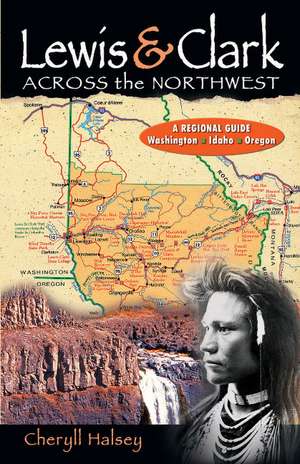Lewis & Clark Across the Northwest: A Regional Guide: Washington, Idaho, Oregon
Autor Cheryll Halseyen Limba Engleză Paperback – 22 mai 2006
Preț: 74.69 lei
Preț vechi: 81.07 lei
-8% Nou
Puncte Express: 112
Preț estimativ în valută:
14.29€ • 14.96$ • 11.83£
14.29€ • 14.96$ • 11.83£
Carte disponibilă
Livrare economică 15-29 martie
Preluare comenzi: 021 569.72.76
Specificații
ISBN-13: 9780888395603
ISBN-10: 0888395604
Pagini: 112
Ilustrații: b/w & colour photos
Dimensiuni: 139 x 215 x 7 mm
Greutate: 0.21 kg
Editura: Hancock House Ltd
Colecția Hancock House Publishers (CA)
ISBN-10: 0888395604
Pagini: 112
Ilustrații: b/w & colour photos
Dimensiuni: 139 x 215 x 7 mm
Greutate: 0.21 kg
Editura: Hancock House Ltd
Colecția Hancock House Publishers (CA)
Cuprins
Introduction; From Crossing the Continental Divide to the Land of the Nez Perce; Among the Nez Perce; Introduction to the Big River; The Falls and Chinookan Traders; The Pacific at Last -- From Beacon Rock to the Pacific; A Winter Passed at Fort Clatsop; Homeward Bound; Among Friends Again -- the Nez Perce; Epilogue; Index.















